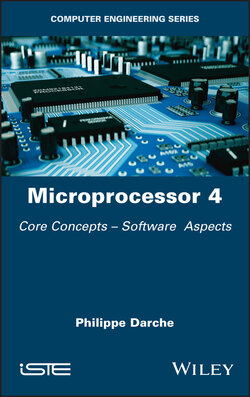Читать книгу Microprocessor 4 - Philippe Darche - Страница 17
1.2.1. Immediate addressing
ОглавлениеImmediate addressing mode, also called immediate data addressing mode, makes it possible to initialize a register or a memory location with a constant value d, which is specified after the instruction mnemonic (cf. § 2.1) (Figure 1.8), hence its other name “literal addressing mode”. There is no effective address here since the memory is not addressed, but (DEC 1983) called it “PC immediate mode with autoincrement” as the PC (Program Counter) is used to address the value memorized immediately after the instruction code. One example is LDA #%10101010 from MC6802 from Motorola, which means that the accumulator A receives the immediate binary value 10101010b (b for binary) in byte format.
Figure 1.8. Instruction with an operand field
It is one of the fastest addressing modes since the value is included in the instruction and there is therefore no additional access to the main memory to fetch the operand accessed by another addressing. But this value is a constant. In addition, from the perspective of programming, the change of value means a modification in the program since the value field cannot be a destination. The extent of the values (in the sense of Chapter 2 of Darche (2000)) is limited by the number of bits remaining after subtraction of those bits reserved for coding the operation itself (a similar limitation for the address for direct and relative addressing). In its extended or long version, the format is double that of a short format. The possibility of choosing makes it possible to decrease the number of clock cycles to fetch the operand. An alternative to this mode is register addressing, which contains a constant value, which is materially fixed. This is the current practice with RISC microprocessors (this will be covered in a future book by the author on microprocessors) such as Arm®, whose register r0 contains the null value (cf. § V3-3.1), which can serve for initialization and avoids time-consuming external access to the main memory.
